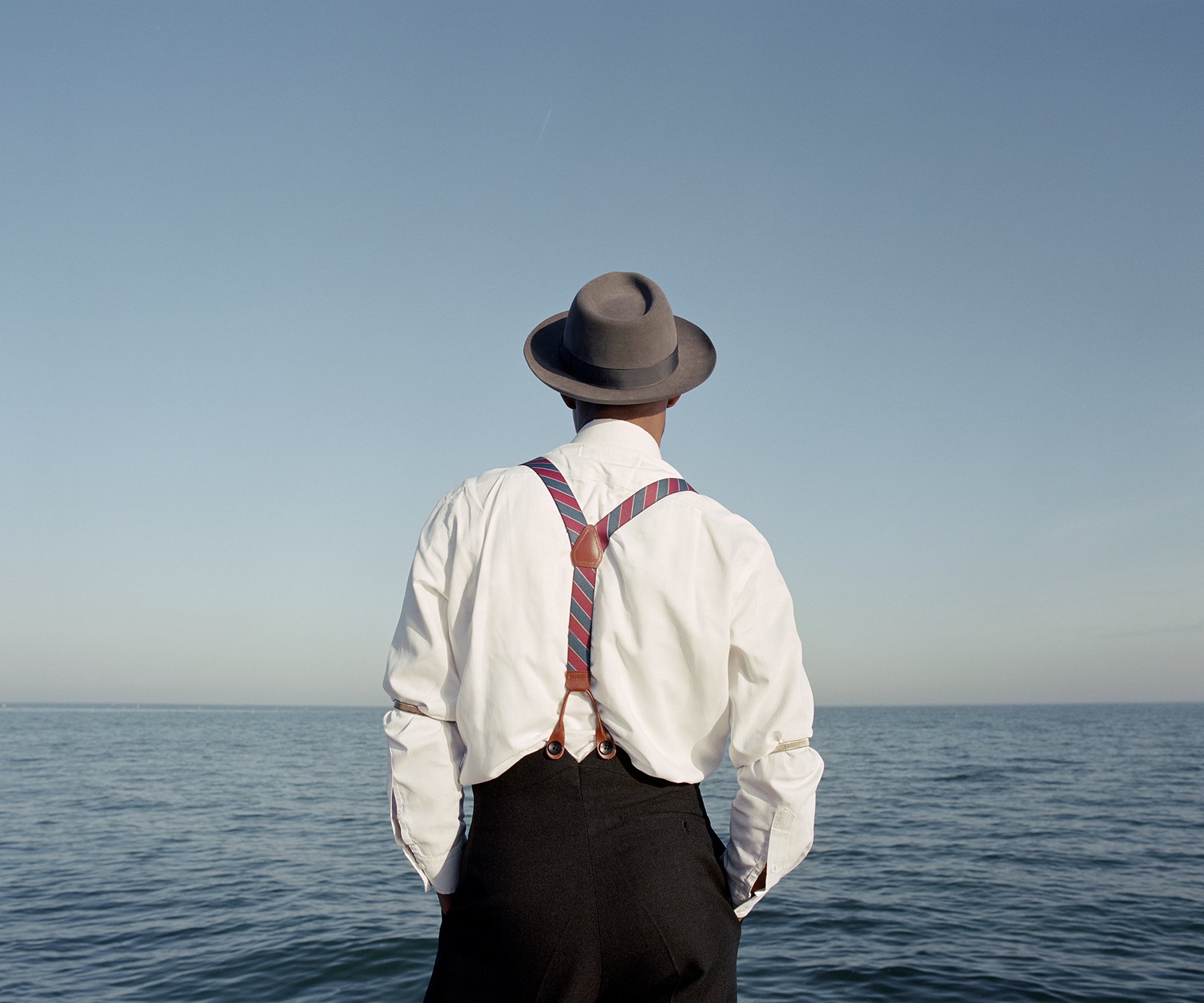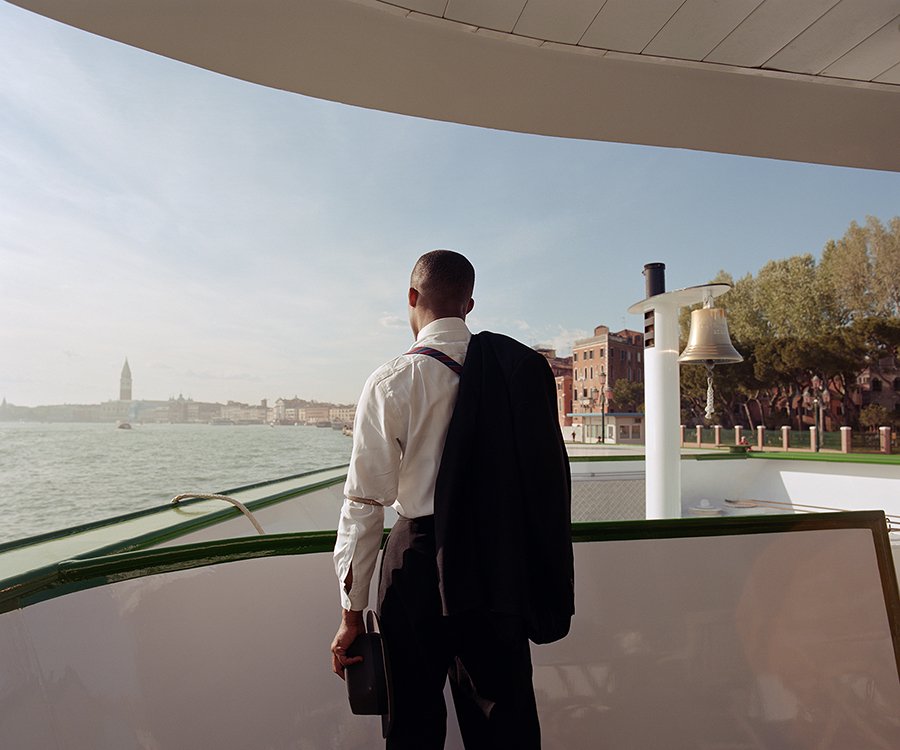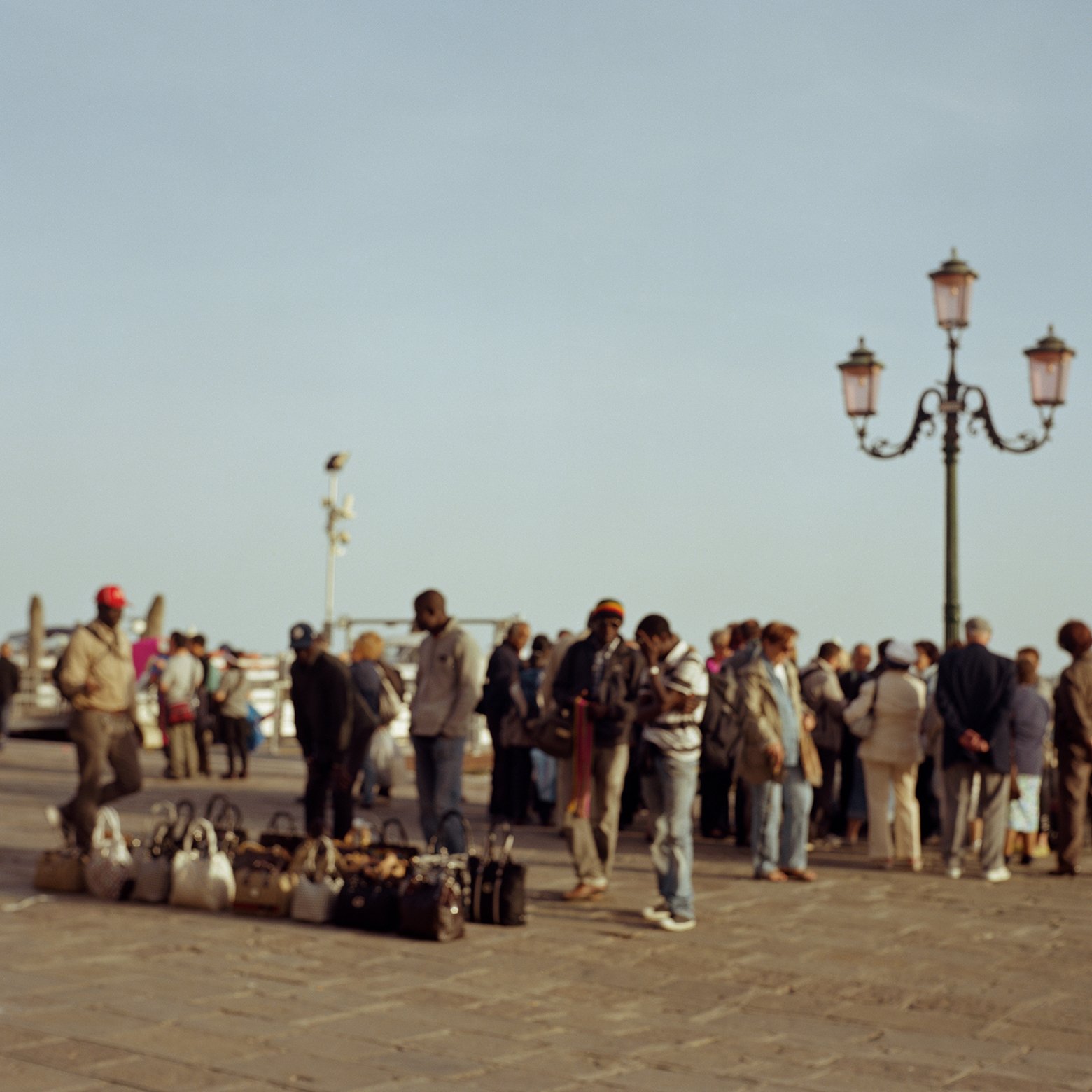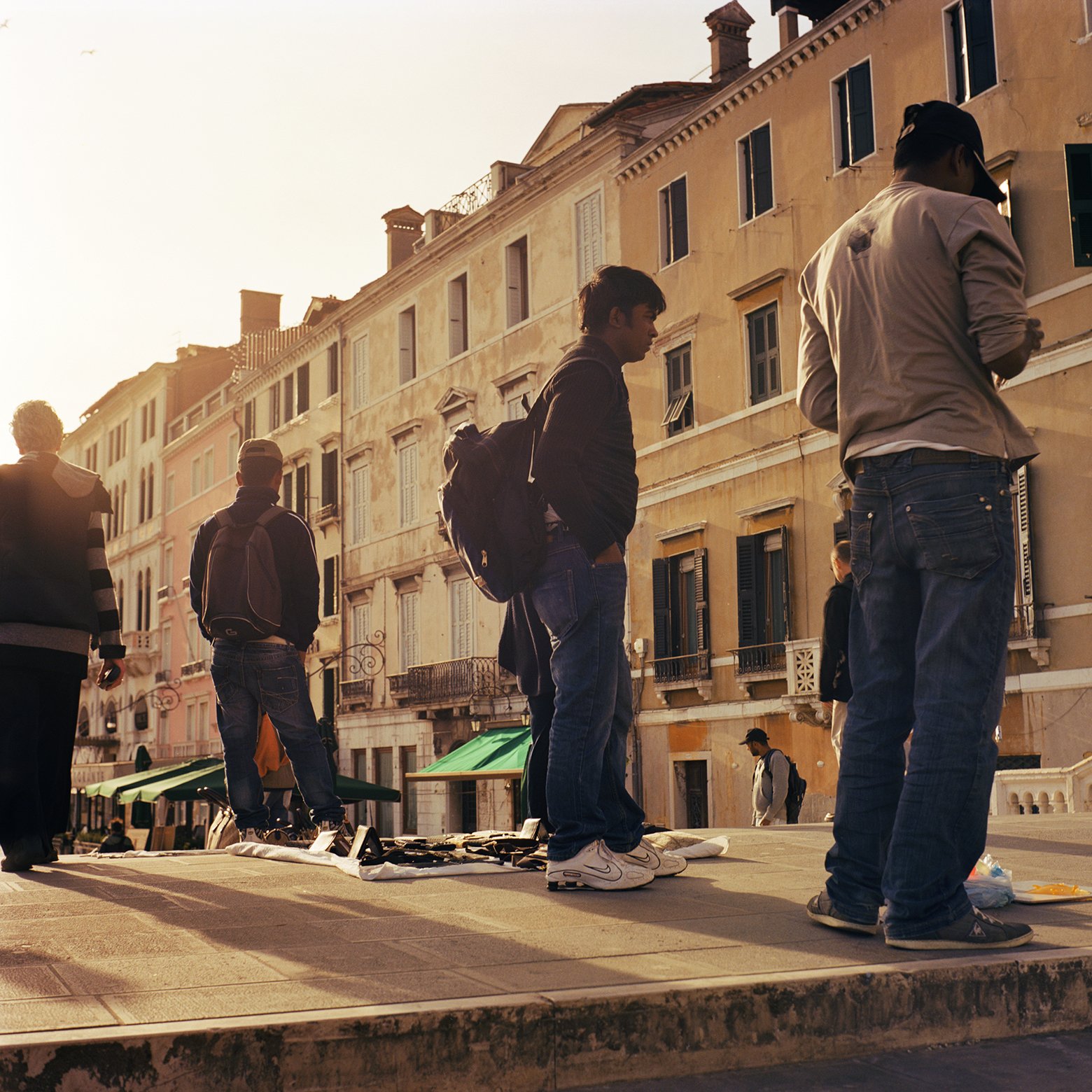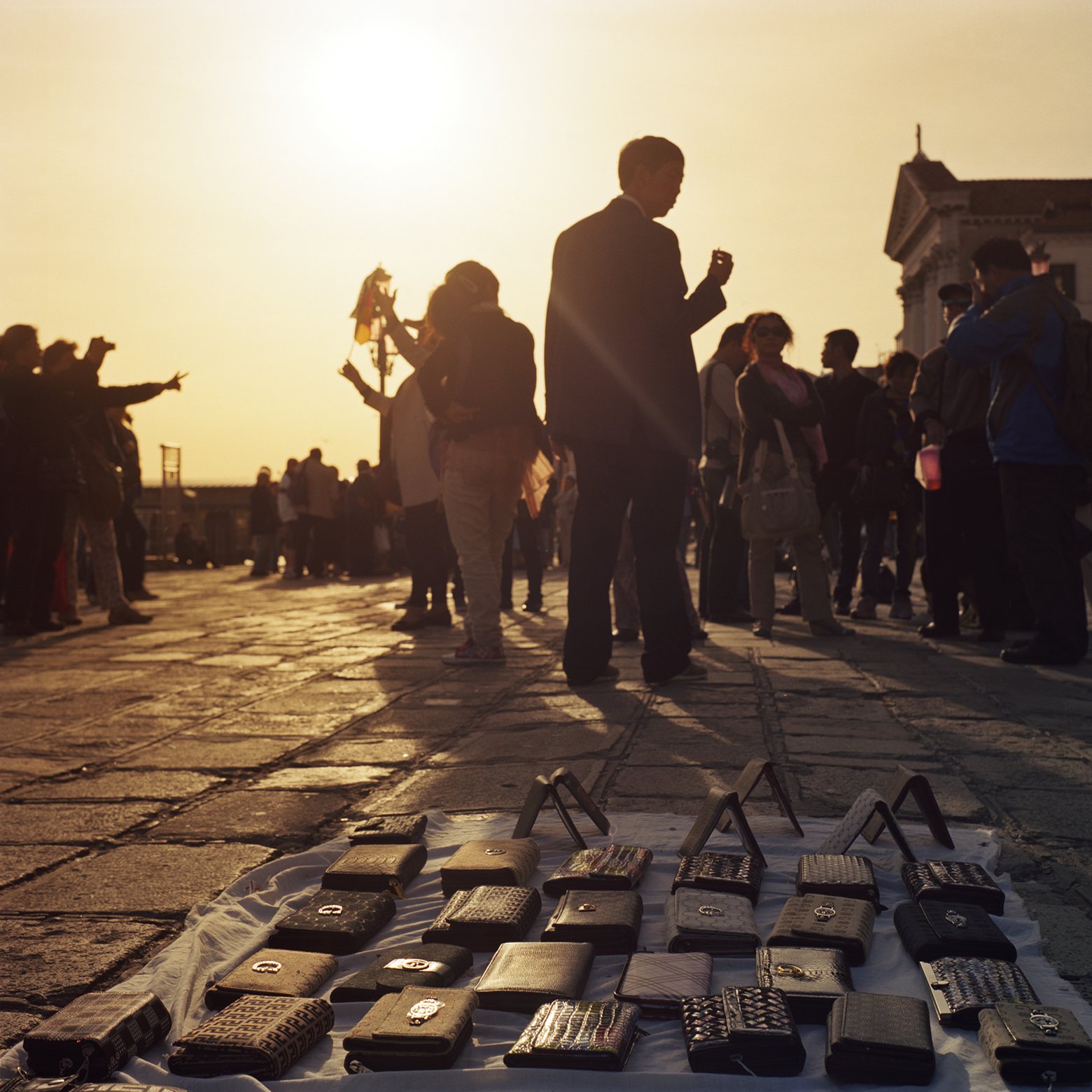Once Removed 2017
The reiteration of this project from its earlier version moves the viewer closer to individuals who were previously only distant figures in the Venetian landscape, facilitating the original intention of research: visualizing migration. A visualization that juxtaposes the classic romanticised image of the suited Caribbean migrant against the contemporary reality of life for early twenty-first century migrants selling bags, belts, scarves, and other items for tourist purchase.
This ‘intention’ for the work is once more signaled by smaller images. These smaller images are now not opposite but rather in-between the larger emblematic images of the suited figure. The narrative is punctured or pricked (using Barthes terminology), by the suited man’s own photographs: small images, slightly out of focus, blurred and unbalanced. We know that these are his images because we share a tacit understanding of the codes of photographic representation that signa what is a ‘good’ photograph and what isn’t.
These small images are commonly referred to as ‘snaps’. They stand in deliberate and aesthetic opposition to the carefully balanced and framed bigger photographic images. Hopefully, these snap-shots return the viewer’s gaze back to the reality of Venice for some of its inhabitants; beyond the backdrop of palazzos, piazzas and canali e ponte. Perhaps more importantly, the titles of these smaller images in both iterations of this project are titled 'Twice Remembered’[1] imploring the viewer not to forget what they have seen as they wandered to and around various pavilions during a Biennale. I’d like to think that these images get to the heart of the matter.
In terms of diaspora, it is my feeling that the links are manifest, unbroken, and tangible. It is my contention that there lies a vacillating and complex connection between the migrants, the tourists, Venetians (and those who live there) and the histories of the diaspora, and what we artists choose to place in front of the lens or in our displays. Perhaps a truism is that we are only connected by the generalization (and societal construct) of skin colour and history, i.e. of blackness; another truism, a similarity of treatment by others because of our skin colour and its associated history no matter what. In whatever country I happen to be one is aware of black men running, and for whatever reason, automatically seems to bring me-and-my-body into a preparatory state. The State vis the police will scan my presence for the type of bag I am carrying, the clothes I am wearing, the way I am walking (and who I walk with) in split-second profiling. This systematic ‘self-regulation’ (the self describes the rightful citizens of the State) is practically considered a necessary duty for millions of European-originated citizens: this has been played out in the media and politics: Brexit and Trump.
And what of photography’s place? Whilst the work attempts to envelope all the above it also serves to work photographically. By this I mean I am aware that varied audiences are looking at the work. Hopefully, there is a layered dialogue occurring. Once Removed seeks to make the viewer implicit in the project by encouraging them to move closer to the snap-shots, to see these migrants re-presented and then move away to see what types of narrative can be told in each of the bigger images. Perhaps more importantly, the project aims to help the viewer think about the images they are taking back to their countries of residence; and reflect on their own status in relation to these migrant sellers in the backgrounds of their tourist pictures.
[1] This second series within the Once Removed series is titled ‘Twice Remembered’ which alludes to the struggle to remember place and people as one travels and gets further away in place and time.
Once removed, 2017
